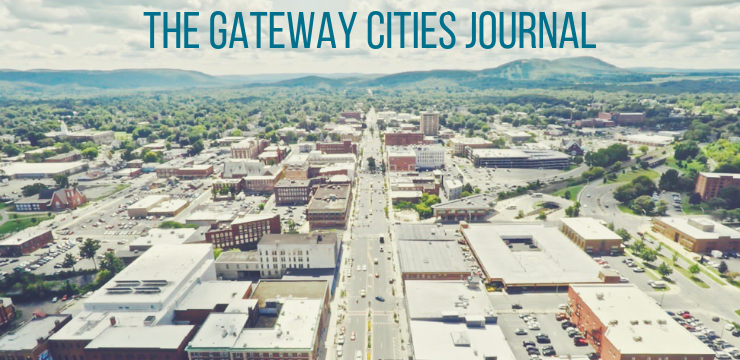
The Opportunity Zone (OZ) program is the talk of the town wherever we go these days. When the Treasury issued long-awaited regulations earlier this month, the New York Times and Wall Street Journal immediately threw up splashy pieces. This obscure provision in the tax code has captured minds and imaginations, even with many seasoned experts in community development finance still scratching their heads and wondering exactly how it’s going to work.
Particularly confounding is whether the capital gains taxes OZ investors defer will ever make it into the places most in need of private capital. Gateway Cities are home to roughly half of the census tracts the Commonwealth has designated as OZs, but many question whether these areas have “investable” projects, especially investments that can produce the more inclusive and geographically-balanced growth that Congress established the program to stimulate.
From our perch, the Opportunity Zone program seems a bit like manna from Washington to unlock The Promise and Potential of Transformative Transit-Oriented Development (TOD) in Gateway Cities. Our regular readers will recall that this May 2018 MassINC study identified enormous capacity for infill development around Gateway City stations with current or planned commuter rail service.
To be sure, TOD is micro in practice—real estate development within relatively small districts. However, in the Gateway City context, it can have outsized regional economic impact because it leverages rail to create connectivity to Boston. Without this connectivity, Gateway Cities fall in what economists call an “agglomeration shadow.” This dark cloud sucks all of their talent and entrepreneurial energy into Boston. TOD, in combination with strong rail service, presents a solution by allowing Gateway Cities to tap into Boston’s talent, R&D, global relationships, and expert service providers. When small regional cities connect and “borrow size,” rather than getting left behind, they actually gain competitive advantage from a larger city nearby.
Over the coming months, MassINC will be working with Gateway City leaders to help position Massachusetts for OZ investments that lead to transformative transit-oriented development in this manner. We began our effort this week by hosting two dozen Opportunity Zone thought-leaders for a listening session. Participants in the meeting described the importance of beefing up existing tools (e.g., Historic Tax credits and the Housing Development Incentive Program) as much as possible to attract and leverage OZ investment. They also floated more creative ways of drawing OZ investment into projects that produce more inclusive growth, such as assembling blended venture capital funds that could raise equity for small businesses in Gateway Cities.
We set the stage for this conversation by presenting data from a new MassINC report exploring Opportunity Zones and Transformative Transit-Oriented Development in Gateway Cities. Authored by Andres Paxton-Martin and Cathy Tumber, this paper maps the designated Opportunity Zones in each of the 13 Gateway Cities with current or planned commuter rail service to show how proximate these census tracts are to the stations.
With only a few exceptions, the designated tracts cover most of the property within walking distance of Gateway City stations. If we can devise smart, complementary policies at the state level, we stand a real chance to get more private capital into projects that leverage our existing transportation infrastructure. Chris Rezendes, a business leader from New Bedford, closed the thought-leader meeting with a compelling tension to keep in mind: Opportunity Zones seek to draw patient equity investment to new Gateway City markets, but the design of the programs forces us to get this capital flowing quickly. If we want to capitalize on this rare gift from Washington, we’ll need to act fast!
-Rachel Dec
Housing & Economic Development
TDI Fellow Carlos Matos speaks with Chelsea’s downtown coordinator Mimi Graney about the city’s recent revitalization efforts.
Gov. Baker and Mayor McGee attend the ground-breaking for a new $30 million YMCA in downtown Lynn.
The New Bedford Housing Authority unveils 12 new handicap-accessible homes in a revitalized building that had formerly been referred to as a “graffiti-ridden eyesore.”
Speaking at UMass Dartmouth, Secretary Ash announces a $300,000 state grant to further the “Blue Economy” effort MassINC recently recognized with a 2018 Gateway City Innovation Award.
In Quincy, low- and middle-income residents are priced out by the city’s housing boom.
A $26 million project, the Blackstone Heritage Corridor Visitor Center, is unveiled in Worcester as a gateway and green space inviting visitors into the Blackstone Valley.
The Baker-Polito Administration, in addition to Massachusetts Growth Capital Corporation, announce $2 million in small business grants to 40 organizations focused on underserved communities and Gateway Cities.
If you haven’t seen it yet, take a look at Raj Chetty’s Opportunity Atlas in the New York Times.
The Brookings Institution releases new research finding that the American middle-class now lives in small and midsized cities.
Education
Commissioner Riley visits Holyoke for a town hall.
The Boston Globe Magazine looks at student-centered learning at Revere High.
A $20 million project will turn Worcester’s vacant Lincoln Square boys club into an alternative school for students with autism.
In a Herald News op-ed, Ranjini Govender and Fall River superintendent Matt Malone ask the Massachusetts Legislature to fix Chapter 70.
Boston College hosts a national conference on Building Systems for Student Success on November 13th.
Transportation
After years of effort, the MBTA puts three retail locations at the Lynn commuter rail station out to bid.
MGM has already generated 2,000 Uber trips to and from downtown Springfield.
Worcester’s Chamber of Commerce convenes a panel on strategies to improve Union Station and the surrounding neighborhood.
Communities & People
NPR names Worcester the new It Town.
More than 50 artisans prepare to be featured at Indian Orchard Mills Open Studio Art show in Springfield next weekend.